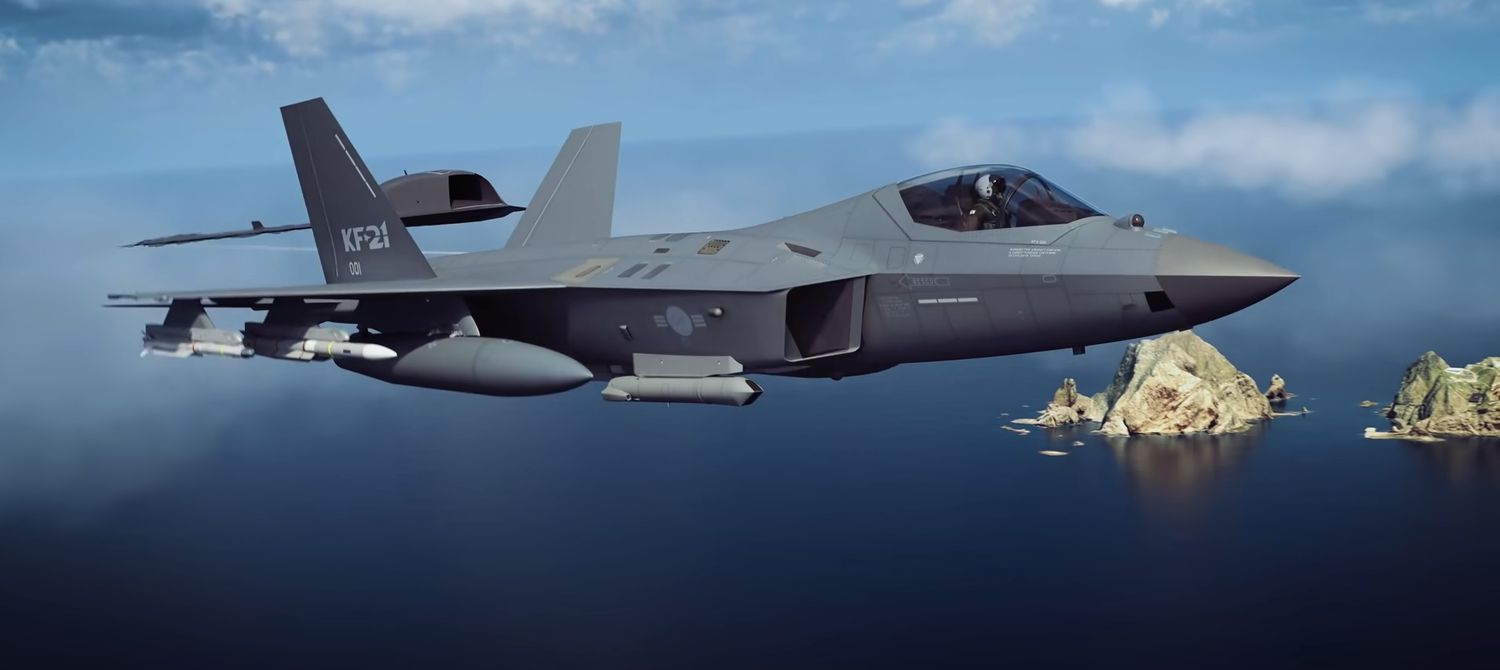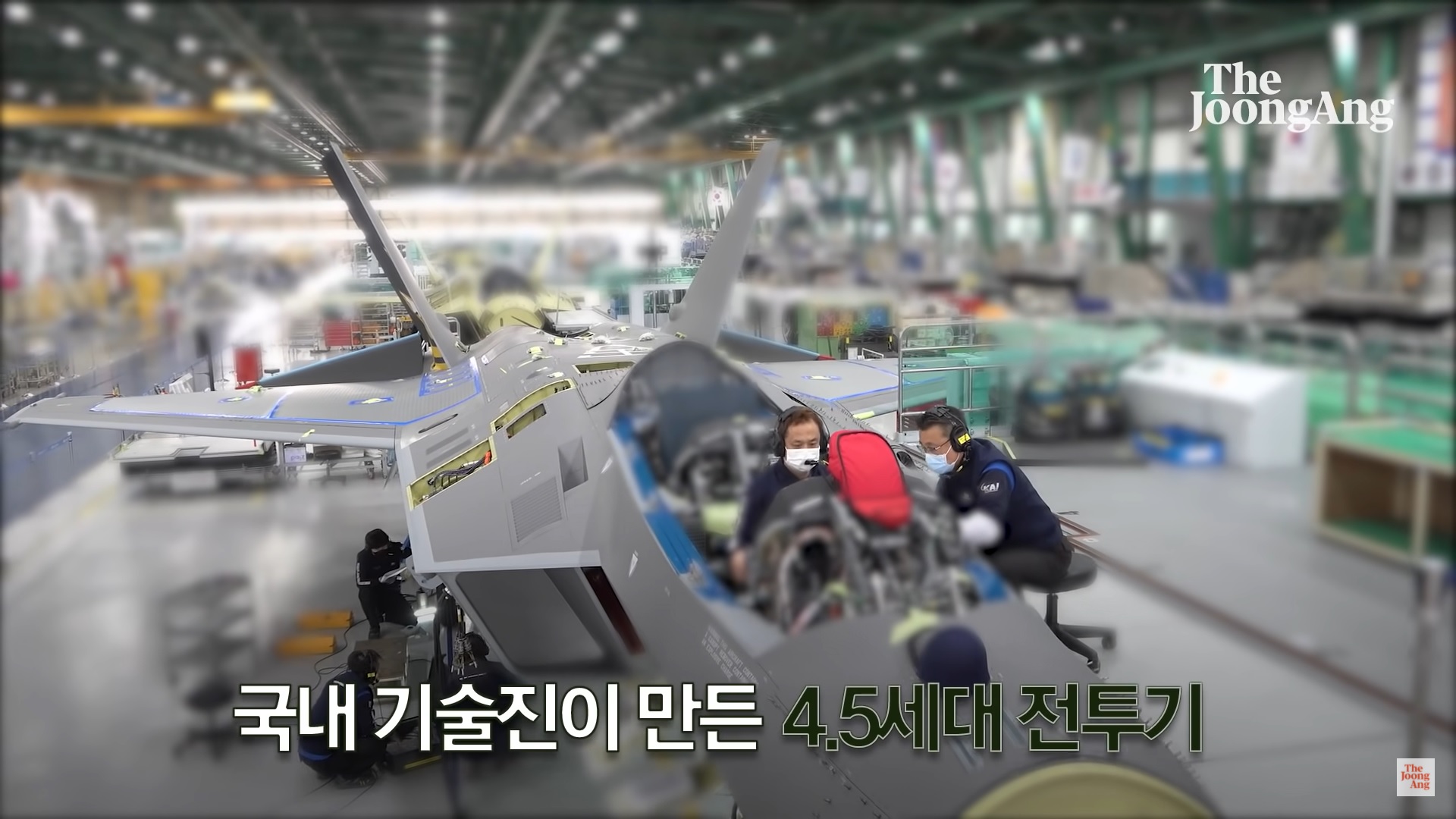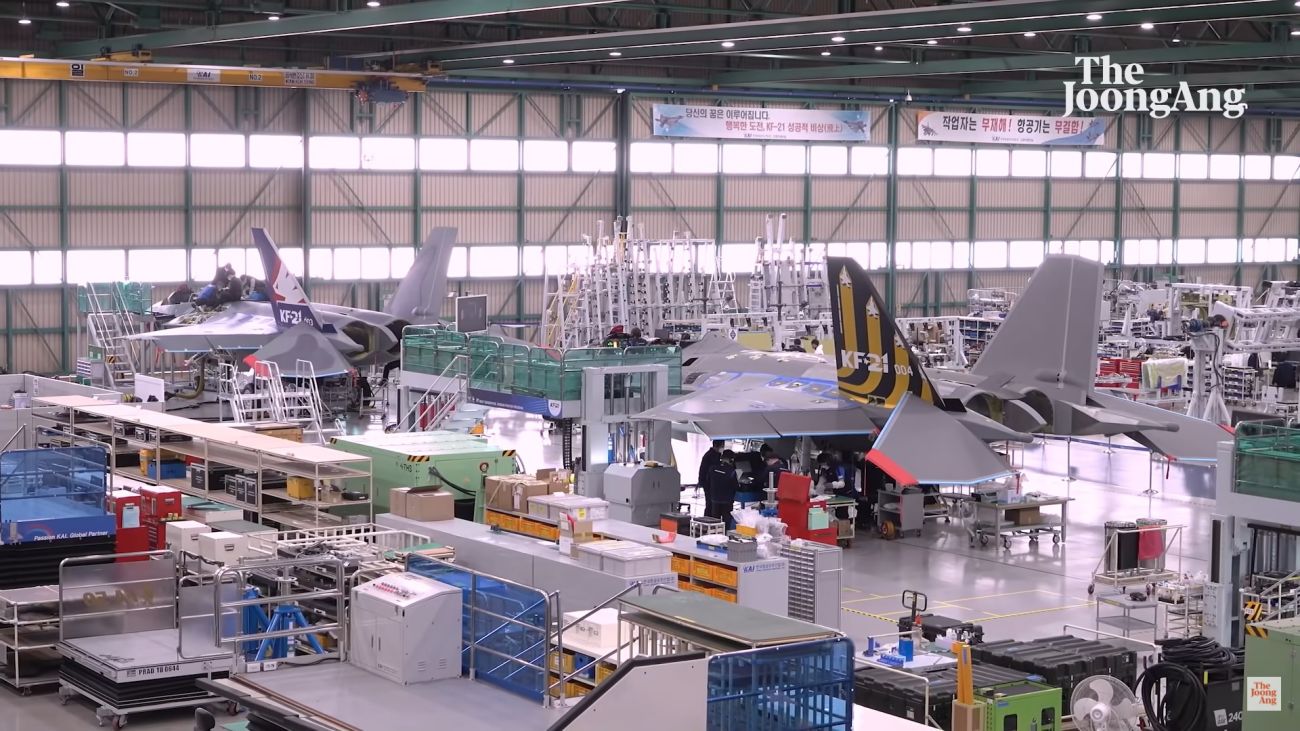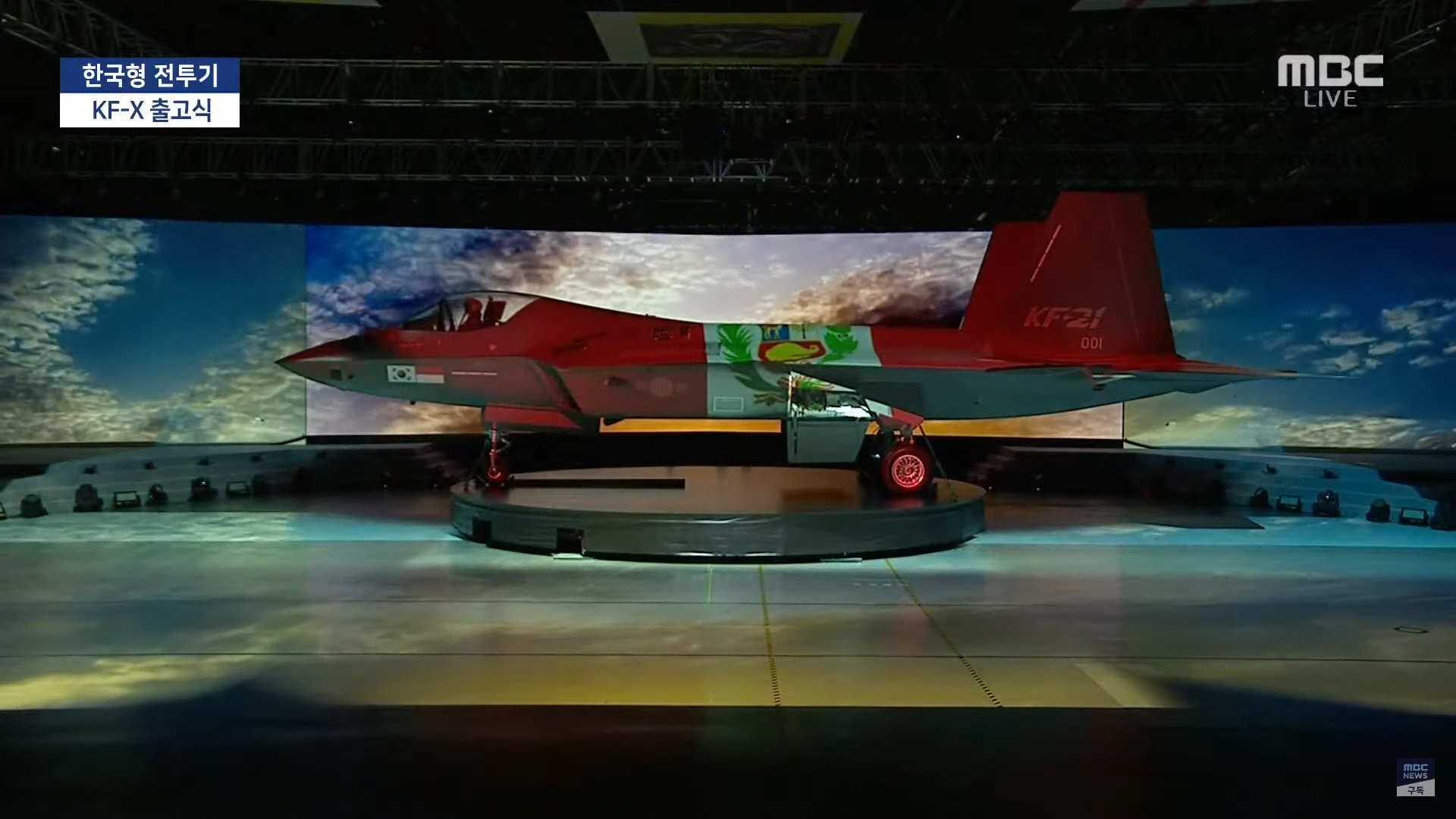KAI bets heavily on KF-21 Boramae, whose development is progressing at a good pace
At the Korean Aircraft Industries (KAI) plant in Sacheon, the four prototypes of the single-seat KF-21 have already been assembled and units 5 and 6, both two-seaters, are being assembled.
Journalists from The JoongAng gained access to KAI’s facilities and were able to see first hand the progress being made on the 6 KF-21 prototypes. One of the peculiarities they were able to quickly appreciate were the different paint schemes KAI is testing on its aircraft. In particular the striking vertical drifts on prototypes 4 and 5.
KAI wastes no time
Prototypes 1 and 2 are already equipped with their powerplant, consisting of two General Electric F414s engines. Testing of the prototypes with the engines running will begin this year. If the engines and the aircraft’s various instrument panels and systems work as planned, it will move to the runway testing phase.
A KAI official said, «Once the engine tests are normally completed, we plan to conduct a runway test drive of the fighter aircraft starting in the spring.» The runway test drive is a test in which a fighter jet does not fly, but runs down the runway at high speed. A KAI official said, «This is the most tense time.»
If all goes well, the KF-21 Boramae is expected to take flight for the first time by the end of June. Initially, the maiden test flight was scheduled to begin in July, but the assembly and preparation process for the test flight went smoothly, so the schedule was moved up.
This test phase will last approximately 4 years, since the projected performances and capabilities must be corroborated, the correct performance of all on-board systems must be checked, and the correct separation of external fuel tanks and the different armaments with which the fighter will be equipped must be tested.
The test activity lasts 24 hours. Flights are conducted during the day, and if the slightest error or divergence arises, the design is reviewed and corrected during the night, to retest the aircraft the next day.
Designed to last 30 years or more
In the structural test building adjacent to the production facility, durability tests are conducted on two structural prototypes of the KF-21. The Boramae, which has more than 100,000 holes for attaching more than 220,000 bolts and nuts, is subjected to continuous pressure testing to simulate the rigors of flight during its operational life. In this regard, wing load fatigue testing is extremely important.
The service life of a KF-21 fighter is designed to be 30 years (under «normal» use), but it is tested to see if it can withstand up to 2.5 times that (75 years), in order to have a good margin of safety.
The KF-21 can carry up to 7.6 tons of combat load, including missiles, bombs and fuel tanks, distributed between the fuselage and wings, and must perform high-speed maneuvers with that weight. To verify that the wing design and construction can withstand such a demand, the wing is tested by repeatedly applying pressure equivalent to that load 100,000 times.
In the other structural test prototype, 3,232 cables were connected to test the correct electrical operation of the equipment to be installed. Lee Won-seok, head of the structural test team, said, «We analyze and supplement a large amount of data from more than 3,000 cables every day.
Advanced equipment
The KF-21 Boramae, although structurally in its first batches may be considered a 4.5-generation fighter, with a radar cross-section of less than 1 square meter (like a Rafale or Super Hornet), its equipment and software architecture will be equivalent to fifth-generation aircraft, such as the F-35 Lightning II.
The main detection element will be an advanced AESA (active electronically scanning phased array) radar developed by the Defense Science Research Institute (ADD) and produced by Hanwha. According to Korean sources, this radar will have superior characteristics to its Russian and Chinese counterparts. Starting in February, a prototype of the radar will be installed on a B-737 test aircraft and during next year it will be tested on KF-21s.
The sensor section will be complemented by frontal passive systems such as the IRST (infrared tracking device, like those used by European or Russian aircraft) and an advanced optronic tracking and targeting equipment under the cockpit, similar to the F-35’s EOTS. Of course, it will also have an advanced electronic warfare and self-defense system, which will increase the aircraft’s situational awareness and survivability.
The KF-21 will be a safe aircraft, as it will have triple redundancy flight computers and an automatic collision avoidance and recovery system, which can save the aircraft in the event of the pilot’s loss of orientation.
Designed to evolve
The KF-21 Boramae is designed to progressively advance in combat and survivability capabilities by implementing improvements in blocks. Block 1 aircraft will be among the 4.5 gen aircraft with reduced radar observability. Block 2 will be an aircraft of more advanced construction and will carry its armament internally, achieving greater radar stealth, similar to that of an F-117. By Block 3, the design, construction and materials of the KF-21 will have evolved enough to become a very low observability aircraft, entering the league of the F-35 or F-22.
But KAI is going further, and wants to gradually equip its KF-21 with sixth-generation aircraft characteristics.
For example, the future Korean fighter will be equipped with laser weapons, for which work will be carried out on the miniaturization of this type of technology. The pilots will also be supported by artificial intelligence (AI), which will eventually enable the fighter to carry out cyber-attack missions against enemy forces. For all this, the hypothetical «advanced» KF-21 will have to incorporate more powerful new-generation engines, which produce more energy and have a more efficient handling of excess heat. There was even talk of taking the aircraft’s level flight speed to mach 3 or higher.
In addition, the Korean fighter will not fly alone, but will have the ability to team combat missions with unmanned combat aircraft, such as the stealthy Stingray, revealing to the public in a KAI promotional video in October 2021. From the back seat of the two-seat version of the KF-21, a systems operator will be able to control the combat actions of an as-yet-undetermined number of Stingray systems, acting as a powerful force multiplier.
Looking for customers
But for all these fabulous prospects to come to fruition, KAI needs export customers to fund the program’s path to the future. It is no coincidence that, during its rollout, the KF-21 was «painted» with the flags of countries such as Colombia, Qatar, Turkey, Peru and Malaysia.
Currently, the KF-21 Boramae has an assured production of 120 units for the Republic of Korea Air Force (ROKAF), at an estimated cost of USD 60 million per unit.
To this number should be added the 50 or 60 units that Indonesia, partner in the KF-X program, should build in its country through technology transfer from Korea. For this purpose, Jakarta had committed itself to pay 20% of the development cost, but according to the latest information available, it has only paid a quarter of its commitments. The two countries have negotiated new agreements, which allowed joint work to resume and dozens of Indonesian technicians returned to Korea to continue participating in the program, but it is not known if the economic difference has been rectified. Considering that Indonesia is negotiating the acquisition of 36 Dassault Rafale and even eight Boeing F-15EX, it seems unlikely that it will be able to fulfill all its obligations at the same time.
So South Korea will make significant efforts to win new customers for the KF-21, as this would allow financing its development, while the evolution of the KF-21 is necessary to conquer new markets, especially in the face of the emergence of Chinese and Russian fifth-generation options with good export potential.
Moreover, for KAI, the success of the Boramae program means being able to maintain its human capital. The KF-21 currently employs 1,600 highly qualified engineers, who represent a wealth of knowledge and skills that would allow the company to grow and project itself into the future, especially considering the plans outlined by its CEO to make KAI the largest aerospace company in Asia by 2030.







Para comentar, debés estar registradoPor favor, iniciá sesión